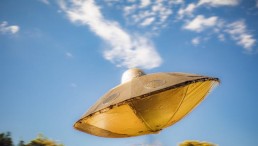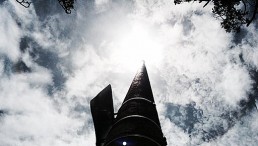Moon is safe for human exploration according to the first detailed radiation measurements on the lunar surface by China's Chang'e 4 lander. The data will be used by future researchers in determining how much protective shielding is needed to protect future crews.
Past missions of Apollo during the '60s and '70s have failed to capture the radiation exposure of the mission while on the Moon's surface because the dosimeters they carried recorded the total exposure from their entire journey. Since then, scientists have had to estimate levels of radiation on the crew while on the Moon from extrapolation and modeling."
Measuring Radiation Levels on the Lunar Surface
NASA is planning to put humans back on the Moon by 2024 with its new lunar mission called Artemis. Likewise, the China National Space Administration is also eying human explorations on the lunar surface by the 2030s. China's Chang'e 4 lander made history in 2019 when it successfully landed on the Moon's Von Kármán crater.
<iframe width="560" height="315" src="https://www.youtube.com/embed/vpNa4u997xA" frameborder="0" allow="accelerometer; autoplay; clipboard-write; encrypted-media; gyroscope; picture-in-picture" allowfullscreen></iframe>
Chang'e 4 has brought along instruments which include a new dosimeter operated by study co-author and physicist Robert Wimmer-Schweingruber of the University of Kiel, and his colleagues in China and Germany.
The new dosimeter measures the hourly radiation rates on the lunar surface and found that astronauts would be exposed to roughly 200 times the radiation levels people get on Earth.
Wimmer-Schweingruber said that the results of the measurements are relatively applicable to human explorers because the dosimeter is placed inside the probe of Chang'e 4proving a partial shielding like how their spacesuit protects astronauts.
He also said that they could measure radiation levels five to ten times of what passengers of an intercontinental flight from New York to Germany receive when flying above the protective atmosphere.
Read Also: Dynetics Unveils Lunar Lander for Future Artemis Mission
Protecting Future Moon bases
The measurements they got from Chang'e 4 lander were used to calculate the amount of protection future Moon bases would need. They estimated that at least 50 centimeters of regolith would be sufficient to protect them. Additionally, at least 10 meters of water shielding a deeper chamber would be enough to protect against solar storms that can cause a dramatic spike on radiation levels.
The new dosimeter measured both charged and neutral particles. Charged particles are those protons and heavy nuclei that have been stripped off their electrons, which are considered hazardous because it can penetrate human skin and damage the DNA, which then leads to cancer and other health conditions.
The charged particles come from two primary sources: the powerful solar flares and a constant rain of galactic cosmic rays from space.
Furthermore, the Moon does not have a magnetic field to deflect radiation, unlike the Earth. When radiation hits the lunar surface, neutral particles are sprayed over the Moon, which penetrates deeper than the charged particles and can wreak havoc on other cells.
Francis Cucinotta said that the results were already expected. Still, it is good to have specific measurements that verify astronauts can be safe in shielded bases and spend six months on the Moon without exceeding NASA's legally mandated limits.
Read More: Spring Cleaning on the Moon: Scientists Develop Lunar Dustbuster
Check out more news and information on the Moon Exploration on Science Times.




![Sat-Nav in Space: Best Route Between Two Worlds Calculated Using 'Knot Theory' [Study]](https://1721181113.rsc.cdn77.org/data/thumbs/full/53194/89/56/50/40/sat-nav-in-space-best-route-between-two-worlds-calculated-using-knot-theory-study.png)









